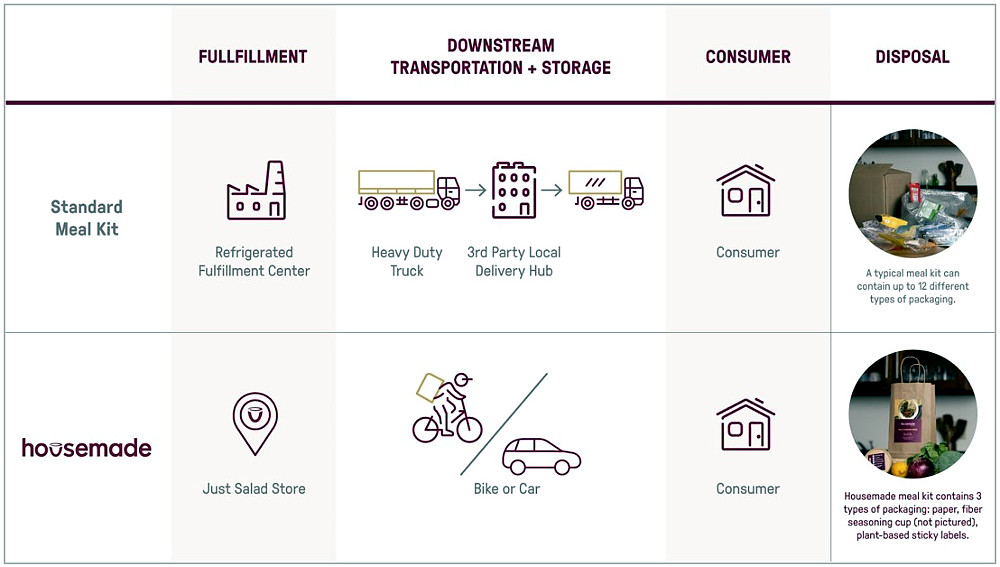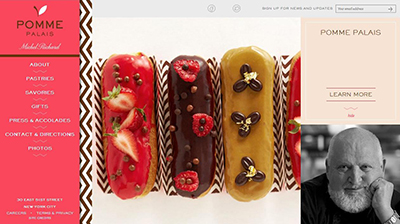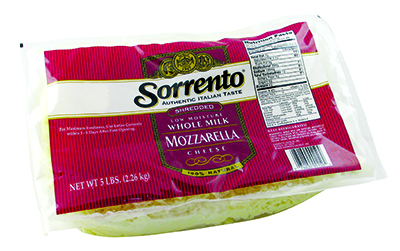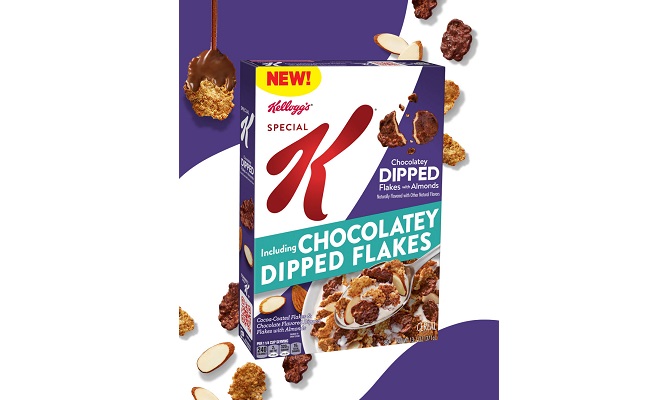Meal kits are synonymous with excessive packaging, but they have a crucial redeeming feature — they reduce food waste. At Just Salad, that got us thinking: Could we drastically reduce packaging to make meal kits an unambiguous environmental win?
Just Salad Aims to Reduce Packaging for Eco-Friendly Meal Kits
When Just Salad began developing a meal kit business this year, I felt the weight of the task before us. To my mind, meal kits were synonymous with excessive packaging — 3.7 pounds more than an equivalent grocery store meal, according to one study. Meanwhile, Just Salad is known for its stance on single-use, and we are not fans: Our Reusable Bowl programkeeps millions of containers out of landfills each year; and at orderjustsalad.com, customers must opt in for disposable utensils.
But meal kits have a crucial redeeming feature — they create less food waste, a major driver of climate change. That got me thinking: Could we drastically reduce packaging to make meal kits an unambiguous environmental win? Could we display the same level of innovation toward meal kits as we had with Just Salad’s Reusable Bowl program?
We decided to try.
Our first step was to review academic research on existing meal kits’ environmental footprint. This led us to a surprising conclusion: To create a more sustainable meal kit, we needed to disrupt the meal kit business itself.
Disrupting the meal kit model
Meal kits’ environmental footprint is determined by several dynamic variables. Three of these are food waste, packaging and human behavior. Food waste is the simplest of the three: One study of 50 meal kit services found meal kits reduce food waste by 27 percent on average versus grocery-bought meals and decrease food-related greenhouse gas emissions by 45 percent.
Packaging is more complicated. Researchers agree it worsens meal kits’ footprint, but they disagree on how much. One study concludes that despite their packaging, meal kits are lower-impact than grocery store meals — using 20 percent less energy from farm to fork. Anotherstudy finds that meal kits consume 23 percent more energy — due mainly to packaging. Both studies assume a meal kit contains 12-13 types of packaging material, including ice packs and mixed plastics.
The third variable, consumer behavior, is an important swing factor. Take a household that drives to the grocery store twice a week. Even if that family purchased meal kits with 20 percent less packaging than normal, their frequent trips to the grocery store would negate the environmental benefits of the lighter packaging. So, your grocery store routine can swing a meal kit’s footprint in the right or wrong direction.
We concluded that, to reduce the environmental footprint of meal kits, we’d have to streamline packaging and reduce grocery store trips to once a week or less. For people who order groceries weekly and discard spoiled food consistently, that could make our meal kits a better choice.
Achieving this would require deeper changes to the meal kit model. If we wanted to slash packaging, we’d need to alter the conditions that necessitate it. That meant rethinking distribution, logistics and delivery.
Packaging, supply chain, product
After five months of research and testing, we created Housemade — a meal kit with 91 percent less packaging by weight than the average meal kit.
In contrast to meal kits with 12-13 types of packaging, Housemade has three: recyclable paper, 2 ounces of compostable fiber, and water-soluble stickers; no ice packs, aluminum or plastic pouches (we’re still computing the greenhouse gas emissions of Housemade packaging, but our initial estimates suggest they’re about 50 percent lower).

The only way to achieve these reductions was to rethink the meal kit concept. Typical meal kits require a subscription, and they’re trucked to regional distribution centers during their journey to the customer. That requires more energy, more temperature control and more packaging.
In contrast, Housemade is subscription-free and delivery happens same-day by car or bike — not truck. We prep meal kits in existing Just Salad stores, which serve as micro fulfillment centers. And starting 2021, we’ll offer grocery staples, as well — minimizing those gas-guzzling grocery store runs.
Read Also: Sustainable Foods Summit 2021 – Food & Beverage Magazine
Our packaging manifesto
Deciding to lightweight packaging by 90 percent is one thing; executing on that is another. To maintain strict guardrails around our sourcing process, we created a Packaging Manifestoand referred to it often:
1. No plastic pouches.
Plastic pouches are not recycled curbside, so they have no place in our meal kits.
2. Nothing should go to landfill.
We believe in a circular economy — where one day, our meal kits will come in reusable containers. Until then, the packaging should be curbside recyclable.
3. No packaging is the best packaging.
Lemon peels and banana skins are Mother Nature’s version of packaging. Placing these items in plastic bags, which then go in a grocery bag, is nonsensical.
Room for improvement
Housemade could reduce the carbon footprint of a household that discards leftover food often, buys groceries more than once a week; and eats lots of packaged, processed foods. Still, there’s room for improvement:
- Portions. Housemade meal kits are single-serving, which is great for single-person households. For those who want multiple servings, we’ll look to offer multi-serving meal kits in streamlined, consolidated packaging that avoids duplicates.
- Recyclability. Our seasoning cup is made of compostable, sugarcane-based fiber. Since household composting is still uncommon, we’d prefer that it were made of recyclable, non-plastic material. We have yet to find such an option.
- Reusable packaging. Reusables win over disposable containers when they’re used over and over, preventing the excess energy needed to make single-use items ad infinitum. On the flip side, they must be picked up, washed and sanitized — all of which requires energy. Given our launch timeline, reusables were out of scope, but we will revisit this possibility.
Engaging customers
Let’s be clear: It’d be best for the planet if we all went vegan, bought our food unpackaged, and wasted not a crumb. For anyone who finds this unrealistic, meal kits might reduce one’s dietary carbon footprint, if they follow these guidelines: Limit grocery trips to once a week or less; choose vegan or vegetarian meals; and dispose of packaging properly. These are the behaviors we’re making easier with Housemade.








